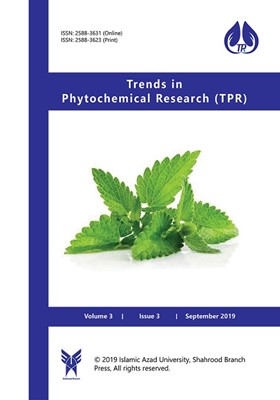-
-
List of Articles
-
Open Access Article
1 - A review of 13C NMR spectra of drimane sesquiterpenes
Sylvia Awino Opiyo -
Open Access Article
2 - Evaluation of triterpenes isolated from stems of Pouteria macahensis T. D. Penn. against Proteus mirabilis
Gabriel da Silva Amaral Hermerson Dantas dos Santos Aline Oliveira da Conceição Fernando Faustino de Oliveira Rosilene Aparecida de Oliveira -
Open Access Article
3 - Cymbopogon citratus Stapf (DC) extract attenuates gasoline vapour-induced low-triiodothyronine syndrome, oxidative stress and lipid peroxidation in rats
Christopher Edet Ekpenyong Utibe Essiet -
Open Access Article
4 - Antimicrobial activity and toxicity of Eucalyptus globulus Labill. essential oil against vaginal microorganisms
Mirjana Bogavac Kristina Tešanović Jovana Marić Mirjana Jovanović Maja Karaman -
Open Access Article
5 - Trials of phenanthrene opioids functionalization with hindered polycyclic carboxylic acids
Alessandro Venditti Ambra Pallotti Armandodoriano Bianco -
Open Access Article
6 - Evaluation of cholesterol lowering property of selected herbs in ghee (heat clarified milk fat)
Krupaben M. Shingala Rayan V. Lunagariya Bhavbhuti M. Mehta V.B. Darji K.D. Aparnathi -
Open Access Article
7 - Sonneratinone: A new antimicrobial benzofuranone derivative from the endophytic fungus Aspergillus niger isolated from the mangrove plant Sonneratia apetala Buch.-Ham
Tauhidur Rahman Nurunnabi Shaymaa Al-Majmaie Lutfun Nahar Ismini Nakouti S. M. Mahbubur rahman MD. Hossain Sohrab MD. Morsaline Billah Fyaz MD. Ismail George P. Sharples Satyajit D. Sarker
-
The rights to this website are owned by the Raimag Press Management System.
Copyright © 2021-2025







